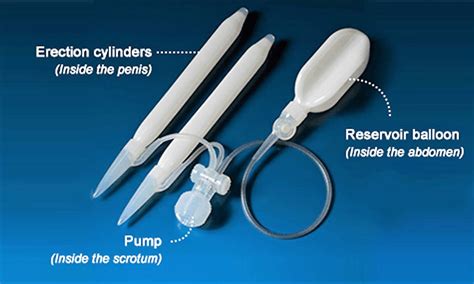Penile implant surgery is a highly effective treatment option for men suffering from erectile dysfunction (ED), a condition characterized by the inability to achieve or maintain an erection sufficient for satisfactory sexual performance. This surgical procedure involves the insertion of a prosthetic device into the penis and scrotum, designed to help men achieve a satisfactory erection.
The concept of penile implants dates back to the 1950s, but significant advancements in design, materials, and surgical techniques have led to the development of modern, highly sophisticated devices. These implants are engineered to mimic the natural process of an erection, providing a reliable and durable solution for men who have not responded to other treatments for ED, such as oral medications, injections, or vacuum devices.
Types of Penile Implants
There are primarily two types of penile implants: inflatable devices and malleable rods.
Inflatable Devices: These are the most common type of penile implant. They consist of two cylinders that are surgically implanted inside the penis, a reservoir filled with saline solution placed in the abdomen, and a pump placed in the scrotum. To achieve an erection, the pump is squeezed to transfer fluid from the reservoir into the cylinders, inflating them. When the erection is no longer desired, the fluid is released back into the reservoir by pressing a release valve in the scrotum. Inflatable devices come in two-piece and three-piece models, the three-piece being the most commonly used due to its ability to provide a more natural erection and easier deflation.
Malleable Rods (Semi-Rigid Implants): These are simpler in design, consisting of two flexible, bendable rods that are implanted inside the penis. The rods can be bent into different positions, allowing for penetrative sex by positioning the penis upward, and for concealment by bending it downward. While less sophisticated than inflatable devices, malleable rods are easier to use, less prone to mechanical failure, and require less recovery time.
Candidacy for Penile Implant Surgery
Not all men with erectile dysfunction are candidates for penile implant surgery. The decision to undergo this procedure should be made after thorough consultation with a healthcare provider, typically a urologist. Ideal candidates for penile implants have:
- Severe erectile dysfunction that has not responded to other treatments.
- A medical condition that makes other treatments unsafe or ineffective.
- Significant penile curvature or fibrosis due to conditions such as Peyronie’s disease.
- A history of priapism.
The procedure is usually recommended as a last resort, after exploring all other treatment options for ED. The decision-making process involves a detailed discussion of the benefits and risks of the surgery, expectations, and the impact on sexual function and overall quality of life.
Surgical Procedure
The surgical procedure for penile implant placement is typically performed under general anesthesia or regional anesthesia (spinal or epidural). The surgery involves:
- Incision and Exposure: A small incision is made, usually above the penis or in the scrotum, through which the surgical team accesses the penis and scrotum.
- Implantation: The selected device (either inflatable or malleable rods) is carefully implanted according to the manufacturer’s specifications.
- Testing: Before closing the incision, the device is tested to ensure proper function.
- Closure: The incisions are closed, and the patient is taken to the recovery room.
Recovery and Postoperative Care
After the surgery, patients typically spend several hours in the recovery room before being discharged home the same day or the next. The recovery process involves:
- Pain Management: Prescription pain medication is usually provided to manage postoperative pain.
- Activity Restrictions: Patients are advised to avoid strenuous activities, heavy lifting, and bending for several weeks.
- Follow-Up Appointments: Regular follow-up visits are crucial to monitor healing, address any concerns, and provide instructions on how to use the device.
- Device Activation: The inflatable device is left deactivated for several weeks to allow healing; a follow-up appointment is scheduled for its activation and instructions on its use.
Risks and Complications
While generally safe, penile implant surgery, like any surgical procedure, carries risks and potential complications, including:
- Infection: A significant risk with any surgical procedure, which can be managed with antibiotics.
- Mechanical Failure: More common with inflatable devices, which may require additional surgery.
- Erosion: The device can erode through the skin, requiring surgical intervention.
- Scarring: Both internal and external scarring can occur.
Conclusion
Penile implant surgery offers a highly effective solution for men suffering from severe erectile dysfunction, providing a reliable means to achieve and maintain erections. While it involves risks and requires careful consideration, advances in device technology and surgical techniques have made it a safe and efficient treatment option. A thorough discussion with a healthcare provider is essential to weigh the benefits against the potential risks and to determine if penile implant surgery is the right choice for individual circumstances.
Frequently Asked Questions
What are the main types of penile implants available?
+The two primary types of penile implants are inflatable devices and malleable rods. Inflatable devices provide a more natural erection and are the most common type, while malleable rods are simpler and less prone to mechanical failure.
How do I determine if I am a candidate for penile implant surgery?
+Candidacy for penile implant surgery is determined through a consultation with a healthcare provider, typically a urologist. The decision is based on the severity of erectile dysfunction, response to other treatments, and overall health condition.
What is the recovery process like after penile implant surgery?
+The recovery process involves several weeks of healing, during which time patients must avoid strenuous activities, heavy lifting, and bending. Pain is managed with prescription medication, and follow-up appointments are crucial for monitoring healing and providing instructions on device use.
What are the risks and complications associated with penile implant surgery?
+Risks include infection, mechanical failure of the device, erosion of the device through the skin, and scarring. These risks can be minimized by following postoperative instructions carefully and attending all scheduled follow-up appointments.
How long does penile implant surgery typically take to perform?
+The duration of the surgery can vary but typically ranges from 1 to 2 hours, depending on the complexity of the procedure and the type of device being implanted.



